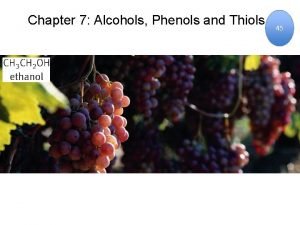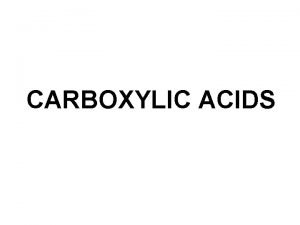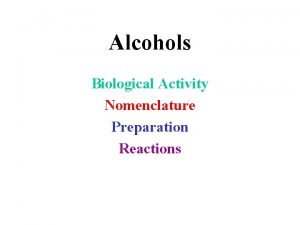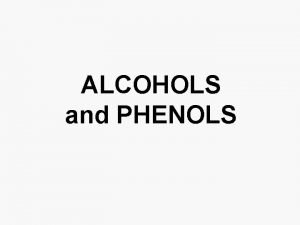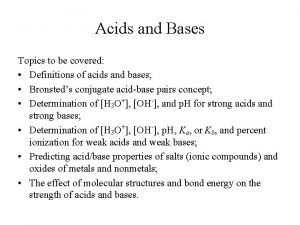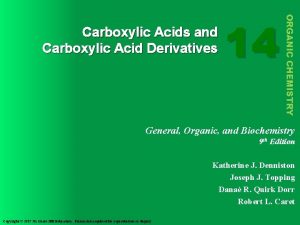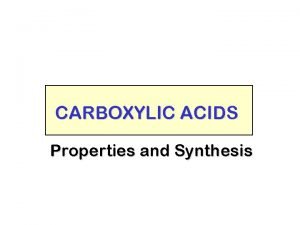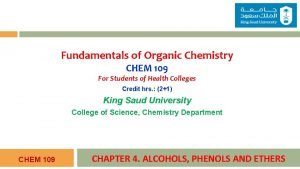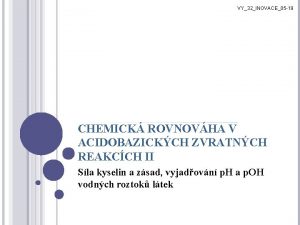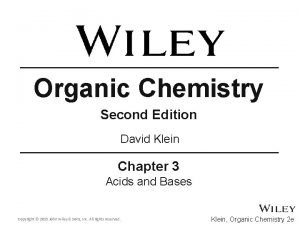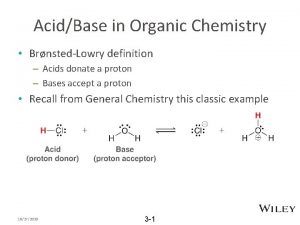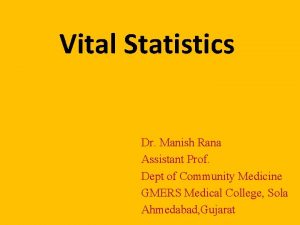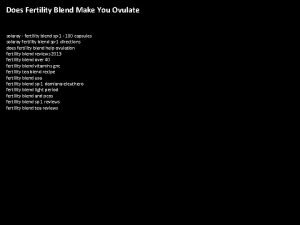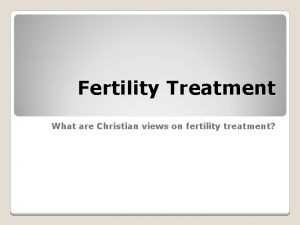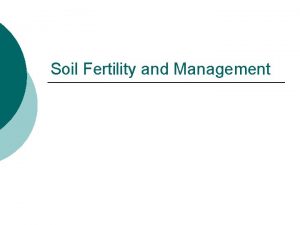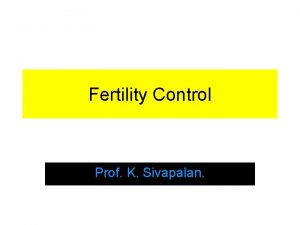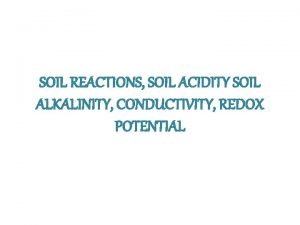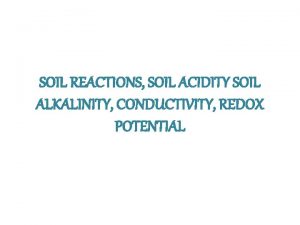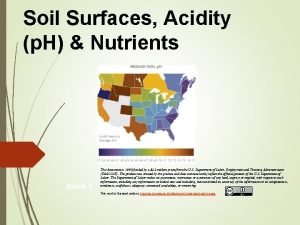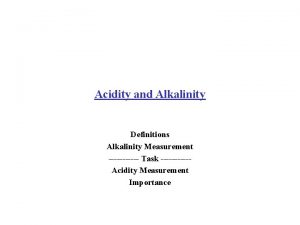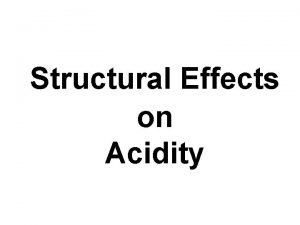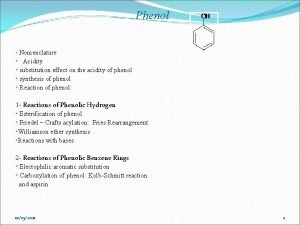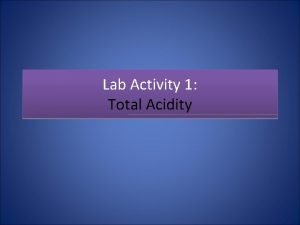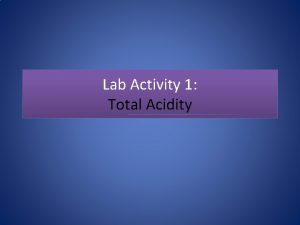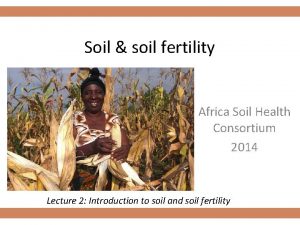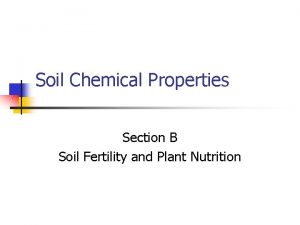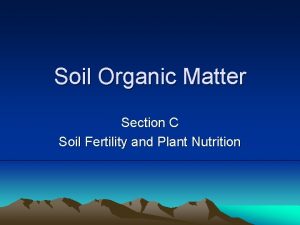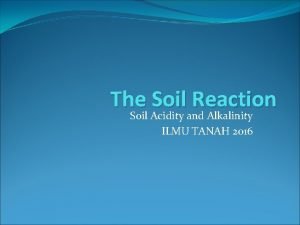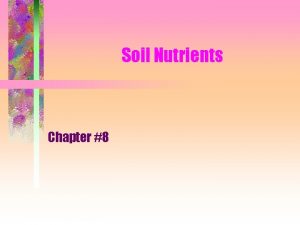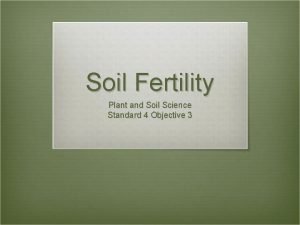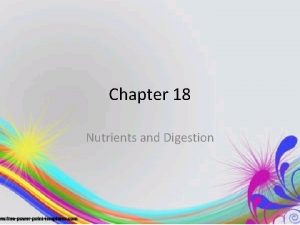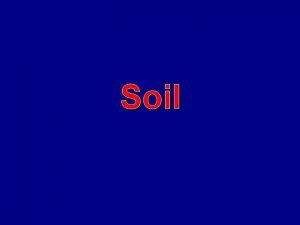Soil Acidity and Nutrients Section D Soil Fertility











![3+ Al(H 2 O)6 [Al(H 2 O)5 OH] 2+ + H+ Al 3+ H 3+ Al(H 2 O)6 [Al(H 2 O)5 OH] 2+ + H+ Al 3+ H](https://slidetodoc.com/presentation_image_h/333a6f792760a4508d070470a762ed78/image-12.jpg)
![[Al(H 2 O)5 OH] 2+ [Al(H 2 O)4(OH) 2] + + H+ Al 3+ [Al(H 2 O)5 OH] 2+ [Al(H 2 O)4(OH) 2] + + H+ Al 3+](https://slidetodoc.com/presentation_image_h/333a6f792760a4508d070470a762ed78/image-13.jpg)
![[Al(H 2 O)5 OH] + [Al(H 2 O)3(OH)3] + H+ Al 3+ H 2 [Al(H 2 O)5 OH] + [Al(H 2 O)3(OH)3] + H+ Al 3+ H 2](https://slidetodoc.com/presentation_image_h/333a6f792760a4508d070470a762ed78/image-14.jpg)















- Slides: 29

Soil Acidity and Nutrients Section D Soil Fertility and Plant Nutrition

Soils ® Soils behave as weak acids or bases ® Some soils behave like a buffered weak acid: are acid, but resist increases in p. H ® have a “buffering capacity” ® ® Some soils behave like a buffered weak base are basic, but resist decreases in p. H ® have a “buffering capacity” ®

Titration Curve - Acid Soil Alkaline p. H “ “Buffering” Acid Base added

Soils ® Many soils behave like weak acids because: ® production of CO 2 ® organic acids in SOM, root exudates ® EXCHANGEABLE CATIONS ® Exchangeable cations are the most important influence on soil p. H. The relative proportion of acid or basic cations on the cation exchange sites determine the soil p. H in almost all cases.

Titration Curve - Alkaline Soil Alkaline p. H “Buffering” “ Acid added

Soils ® Some soils behave like weak bases because: ® presence of Ca. CO 3 ® it is a weak base that will buffer soil solutions against decreases in p. H

Formation of Soil Acidity “Young soil” Time “Old soil” Al 3+ dissolves from minerals Ca 2+, Mg 2+, K+ are leached from soil Clay minerals with exchangeable Ca 2+, Mg 2+, K+ and Al 3+, H+

Exchangeable Cations ® Ca 2+, Mg 2+, Na+, and K+ do not produce H+ in soils, and so are called the “basic cations” ® Al 3+ and Fe 3+ react to produce H+ in soils, and so are called the “acid cations” ® The “base saturation” is the percentage of the CEC occupied by the basic cations. It is highly related to soil p. H.

“Base Saturation Percentage” 8 Soil p. H Low CEC Soil 2 High CEC Soil 0 Percent base saturation 100

Why is ® Al 3+ 3+ Al called “acidic”? ions in solution are surrounded by water molecules (octahedral coordination). ® The high positive charge of Al 3+ causes it to pull electrons from O on H 2 O. ® This makes H 2 O more acidic. ® This is called “Al hydrolysis” ® Fe 3+ behaves similarly.

![3 AlH 2 O6 AlH 2 O5 OH 2 H Al 3 H 3+ Al(H 2 O)6 [Al(H 2 O)5 OH] 2+ + H+ Al 3+ H](https://slidetodoc.com/presentation_image_h/333a6f792760a4508d070470a762ed78/image-12.jpg)
3+ Al(H 2 O)6 [Al(H 2 O)5 OH] 2+ + H+ Al 3+ H 2 O
![AlH 2 O5 OH 2 AlH 2 O4OH 2 H Al 3 [Al(H 2 O)5 OH] 2+ [Al(H 2 O)4(OH) 2] + + H+ Al 3+](https://slidetodoc.com/presentation_image_h/333a6f792760a4508d070470a762ed78/image-13.jpg)
[Al(H 2 O)5 OH] 2+ [Al(H 2 O)4(OH) 2] + + H+ Al 3+ H 2 O
![AlH 2 O5 OH AlH 2 O3OH3 H Al 3 H 2 [Al(H 2 O)5 OH] + [Al(H 2 O)3(OH)3] + H+ Al 3+ H 2](https://slidetodoc.com/presentation_image_h/333a6f792760a4508d070470a762ed78/image-14.jpg)
[Al(H 2 O)5 OH] + [Al(H 2 O)3(OH)3] + H+ Al 3+ H 2 O

Titration Curve—Acid Soil Alkaline p. H The amount of buffering capacity will determine the lime requirement. Soils with higher CEC will have a higher L. R. “ Buffering due to Al hydrolysis Acid Lime added

Soil Acidity Al 3+ Ca 2+ H+ Clay Solution

Al 3+ H+


Sulfide Oxidation Mine tailings (spoils) may become acidic because of the oxidation of pyrite (Fe. S 2): Fe. S 2 + H 2 O + 7/2 O 2 Fe. SO 4 + H 2 SO 4


Al Toxicity ® Below a p. H of ______, 5. 5 Al 3+ may be present in concentrations that are toxic to plants. Al solubility is inversely proportional to p. H. ® Severely inhibits root growth, interferes with P uptake. ® Al toxicity is the #1 problem in acid soils. Mn and Fe may be toxic as well, because they soluble under acid become more _____ conditions.



Plants and p. H ® Differing plant tolerance to acidity is mostly due to: ® Different nutrient requirements ® Ability to immobilize Al 3+ in the rhizosphere or to detoxify Al 3+ within the plant.

Correcting Soil Acidity ® Remember the two “components” of soil active acidity: _____ acidity, which is H+ in the soil solution, and ________ reserve acidity which is _______ Al 3+, H+ on the soil clay cation exchange sites. ® Both of these have to be neutralized to correct soil acidity. To do this, lime ____ is added to acid soils.

Al 3+ H+

Liming Acid Soils ® Lime ® Sources: Ca. O (quicklime), Ca(OH)2 (hydrated lime), Ca. CO 3 (ag lime), Ca. Mg(CO 3)2 (dolomitic lime) ® The amount of lime to add to a soil (lime requirement) depends on: ® ® p. H Cation exchange capacity ® L. R. is usually determined by a soil test

Lime Rates

Reactions of Lime in Soils ® Lime reacts to neutralize solution acidity: Ca. CO 3 + 2 H+ H 2 O + CO 2 + Ca 2+ ® Lime also removes exchangeable Al 3+ from clay cation exchange sites (X is a cation exchange site) 3 Ca. CO 3 + 2 Al. X + 3 H 2 O 3 Ca. X + 2 Al(OH)3 + 3 CO 2
 Soil science simplified
Soil science simplified Nitrogen rich foods for plants
Nitrogen rich foods for plants Thiol molecules
Thiol molecules Carboxylic acids and their derivatives
Carboxylic acids and their derivatives What does na2cr2o7 do
What does na2cr2o7 do Sp
Sp Acid and base definition
Acid and base definition Acidity of thiols
Acidity of thiols Carboxylic acid + base
Carboxylic acid + base Acidity trends periodic table
Acidity trends periodic table Reaction between carboxylic acid and amine
Reaction between carboxylic acid and amine Effect of hybridization on acidity
Effect of hybridization on acidity Acidity of phenol
Acidity of phenol Konstanta acidity
Konstanta acidity Ario acidity
Ario acidity Ario+
Ario+ Living soil vs dead soil
Living soil vs dead soil Convergent plate boundaries
Convergent plate boundaries Dr manish rana
Dr manish rana Imr formula
Imr formula Obando fertility rites place of origin
Obando fertility rites place of origin Birth rate formula
Birth rate formula Contoh soal asfr
Contoh soal asfr Daily wellness fertility blend side effects
Daily wellness fertility blend side effects Down with kitchen slavery
Down with kitchen slavery Cupping therapy for fertility
Cupping therapy for fertility Fertility rate calculation
Fertility rate calculation Christian views on fertility treatment
Christian views on fertility treatment Klasifikasi kapabilitas kesuburan tanah
Klasifikasi kapabilitas kesuburan tanah Connecting the concepts: macroevolution
Connecting the concepts: macroevolution


